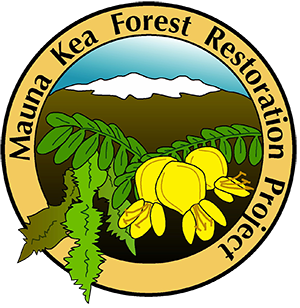

A threatened home
Take a journey through Mauna Kea’s high-elevation dry forest. High above tropical rain clouds, this forest has adapted to an extremely dry and cold climate normally found on continents. You will see plants and animals found nowhere else in the world as you explore this special place.
This forest is one of the last large tracts of dry forest left in Hawai‘i. While there are serious threats to this forest, restoration efforts are helping to protect this special home of a critically endangered bird, the palila.
Learn more… |
Welcome |
Their Only Home |
A Living Legacy |
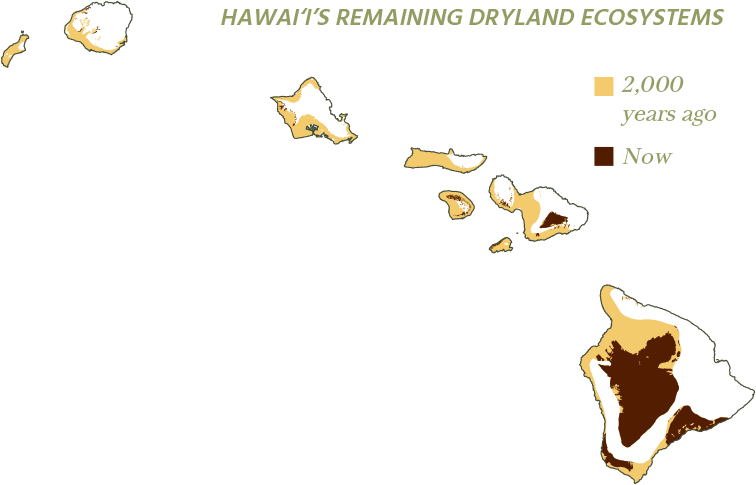
“If the sheep are allowed to stay for long, as they presently do, all the grass and forest of the place shall be consumed. It will be an evil thing…. “
—1856 letter from Isaac Y. Davis to Keoni Ana, Minister of the Interior, describing the impacts of feral sheep on Mauna Kea at the time.
Cattle and sheep
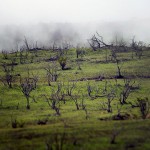 Over the past 150 years, most of the palila’s māmane forest was converted to pasture for cattle ranching. Today, less than 5% of this forest remains, and palila are now only found on the southwestern slope of Mauna Kea.
Over the past 150 years, most of the palila’s māmane forest was converted to pasture for cattle ranching. Today, less than 5% of this forest remains, and palila are now only found on the southwestern slope of Mauna Kea.
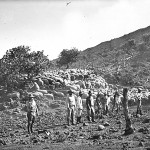 The high-elevation forest and summit areas were ranched for sheep between 1857 and 1905, before the area was designated as one of the first forest reserves. The forest began to recover after over 46,000 sheep were removed in the 1930s and 1940s.
The high-elevation forest and summit areas were ranched for sheep between 1857 and 1905, before the area was designated as one of the first forest reserves. The forest began to recover after over 46,000 sheep were removed in the 1930s and 1940s.
In the early 1960s, a wild species of sheep from Europe, mouflon, was introduced on Mauna Kea for sport hunting.
Predators
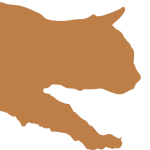 Feral cats, rats, and mongooses are a serious threat to our native birds. Stowaway rats came on the first Polynesian canoes, with other species arriving later on western sailing ships. Mongooses were introduced to control rats, and, though ineffective for this purpose, they instead take a toll on native birds and their eggs.
Feral cats, rats, and mongooses are a serious threat to our native birds. Stowaway rats came on the first Polynesian canoes, with other species arriving later on western sailing ships. Mongooses were introduced to control rats, and, though ineffective for this purpose, they instead take a toll on native birds and their eggs.
The non-native feral cat is the most serious predator to palila. Hawai‘i’s native birds did not evolve with any predatory mammals and are especially vulnerable to them. Each year, about 10% of palila chicks die from cat predation.
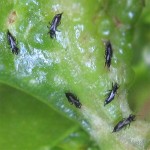
Myoporum thrips
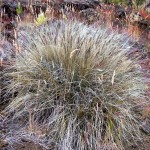
Fountain grass
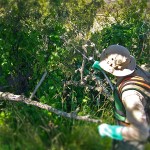
Cape ivy
Invasive species
Non-native invasive weeds threaten Mauna Kea’s high-elevation dry forest habitat by escalating fire risks and displacing native plant species. Fountain grass, cape ivy, fireweed, and gorse threaten to transform this forest.
Invasive insects also threaten the plants and animals in this forest. Myoporum thrips feed on young leaves of naio trees, a common tree in the high-elevation dry forest. These thrips cause branch die-back, and can eventually cause tree death. In addition, non-native species of parasitic and predatory wasps and ants may reduce the availability of insect food sources for palila.
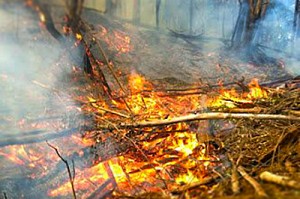 Fire
Fire
Because of invasive grasses, dry climate, and human ignition sources, wildfire can occur in this forest year-round. Fires can start by lightning strikes, arson, vehicles igniting dry grass, military training, campfires, and cigarette smoking.
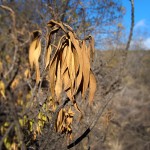 Climate Change
Climate Change
This area is naturally a dry forest ecosystem; however, global climate change is exacerbating drought severity. During drought, stressed māmane trees produce less pods—or none at all—meaning there are fewer pods for palila to eat. As a result, fewer nestlings are hatched, causing the overall population to decline.
